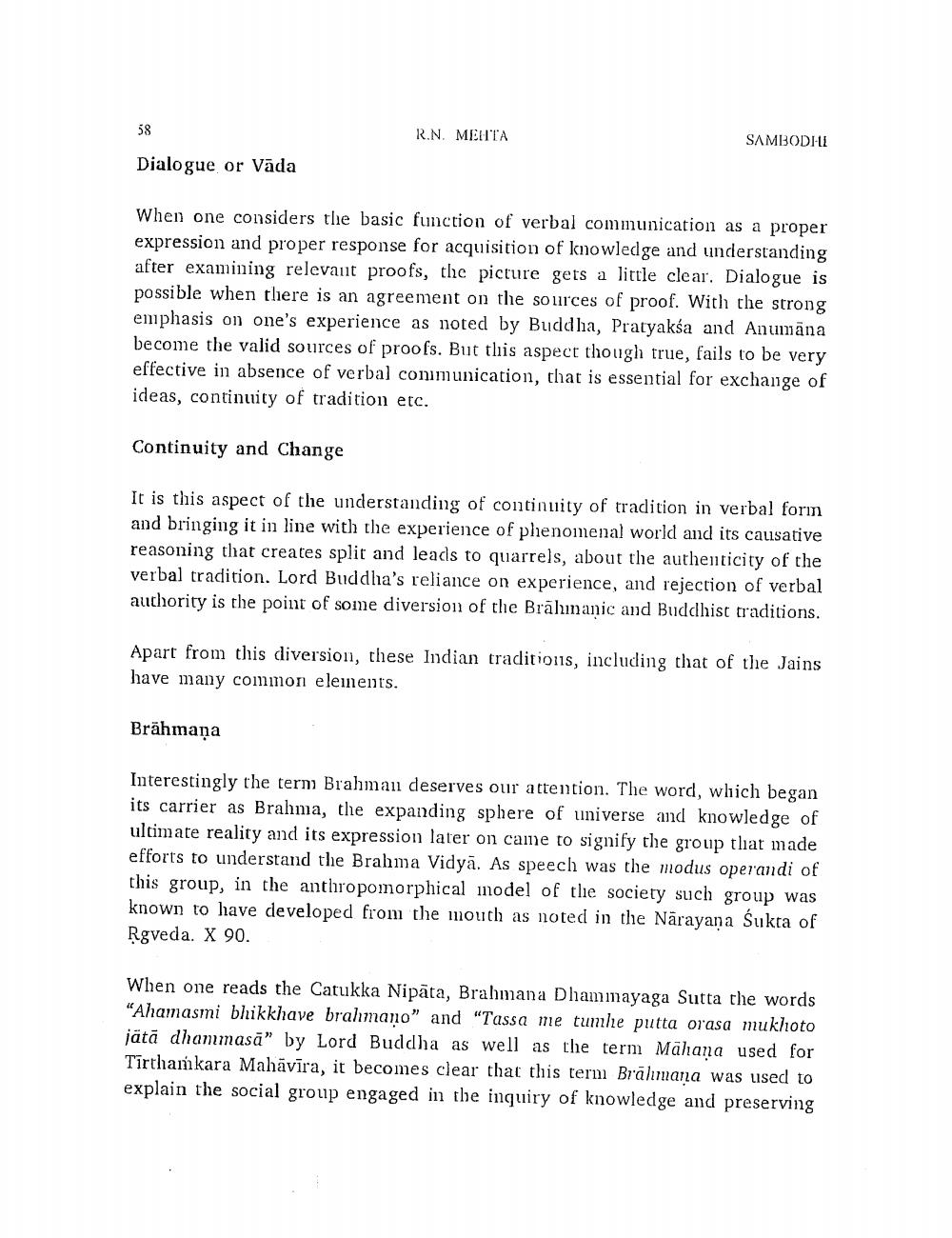________________
RN MEHTA
SAMBODILI
Dialogue or Vāda
When one considers the basic function of verbal communication as a proper expression and proper response for acquisition of knowledge and understanding after examining relevant proofs, the picture gets a little clear. Dialogue is possible when there is an agreement on the sources of proof. With the strong emphasis on one's experience as noted by Buddha, Pratyaksa and Anumana become the valid sources of proofs. But this aspect though true, fails to be very effective in absence of verbal communication, that is essential for exchange of ideas, continuity of tradition etc.
Continuity and Change
It is this aspect of the understanding of continuity of tradition in verbal form and bringing it in line with the experience of phenomenal world and its causative reasoning that creates split and leads to quarrels, about the authenticity of the verbal tradition. Lord Buddha's reliance on experience, and rejection of verbal authority is the point of some diversion of the Brāhmanic and Buddhist traditions.
Apart from this diversion, these Indian traditions, including that of the Jains have many common elements.
Brähmaņa
Interestingly the term Brahman deserves our attention. The word, which began its carrier as Brahma, the expanding sphere of universe and knowledge of ultimate reality and its expression later on came to signify the group that made efforts to understand the Brahma Vidyā. As speech was the modus operandi of this group, in the anthropomorphical inodel of the society such group was known to have developed from the mouth as noted in the Narayana Sukra of Rgveda. X 90.
When one reads the Catukka Nipāta, Brahmana Dhammayaga Sutta the words "Ahamasmi bhikkhave brahmano" and "Tassa me tumhe putta orasa mukhoto jätä dhammasā" by Lord Buddha as well as the term Mahaņa used for Tīrthankara Mahāvīra, it becomes clear that this term Brahmana was used to explain the social group engaged in the inquiry of knowledge and preserving




